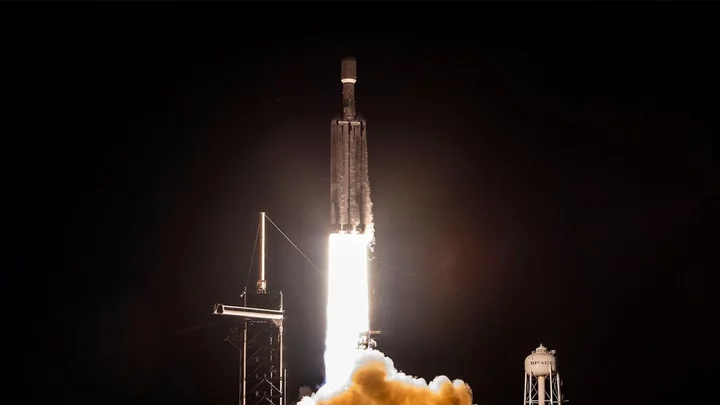A next-generation satellite from Viasat has suffered a malfunction, which threatens to derail progress on the company’s plans to supply faster internet speeds.
The ViaSat-3 Americas launched into Earth’s orbit in May. But on Wednesday, the company reported that “an unexpected event occurred” with the satellite during a reflector deployment.
The problem is serious enough that Viasat is warning it “may materially impact the performance of the ViaSat-3 Americas satellite.”
“We’re working closely with the reflector’s manufacturer to try to resolve the issue,” Viasat CEO Mark Danberg says. “We sincerely appreciate their focused efforts and commitment.”
(Credit: Viasat)The reflector—the large yellow circle—is crucial to the satellite's performance; the reflector is one of the largest ever sent into space, and is designed to boost the satellite’s broadband capacity. “This allows Viasat to reuse more of the capacity because we can downlink to so many spots simultaneously,” Viasat Senior Program Manager Peter Lauenstein said in September.
Viasat has now been forced to consider contingency plans, which suggests the next-generation satellite could be seriously crippled. The company noted it’s considering “redeploying satellites from Viasat’s extensive fleet to optimize global coverage, and/or reallocating a subsequent ViaSat-3 class satellite to provide additional Americas bandwidth.”
ViaSat-3 Americas is the first satellite the company launched to power the next-generation ViaSat 3 constellation. Unlike SpaceX’s Starlink, which relies on thousands of low-orbiting satellites to provide high-speed internet, the new Viasat network will only use three, high-capacity satellites that’ll operate at far higher, geostationary orbits.
(Credit: Viasat)As the name suggests, ViaSat-3 Americas was designed to serve users in the North and South American markets with download speeds at over 100Mbps.
“Nearly half of the capacity of the ViaSat-3 fleet is designed to be available to areas that are currently unconnected or underserved—and the constellation will have the flexibility to move bandwidth from low-demand areas to high-demand areas,” the company said in a previous presentation.
Hence, the malfunction might be a serious blow to Viasat’s plans to bring faster broadband to its customers. Current broadband plans for Viasat start at $49.99 per month for 12Mbps in download speeds while capping the data at 60GB per month.
The company plans on sharing more updates on the status of the malfunctioning satellite. Meanwhile, the second ViaSat-3 satellite, meant for the EMEA market, is still undergoing environmental testing in the company’s labs.

